
Kansas Geological Survey
Open-file Report 2001-38

|
|
Kansas Geological Survey Open-file Report 2001-38 |
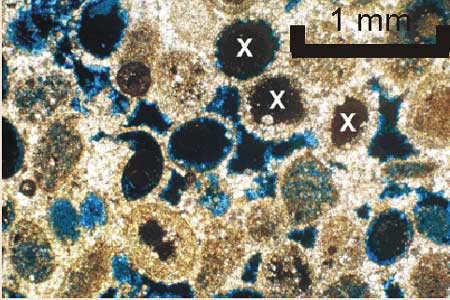
|
Coarse grained oolitic grainstone with moldic and primary intergranular porosity. Early isopachous rim and miniscus calcite cements with little cement growth into oomolds. Micritized ooid cortices and oolite grains preserved. Isolated oomolds not filled with blue epoxy (X) suggest these pores are not connected. Thin section photomicrograph with crossed polarizers. (Layer 2) | |
|
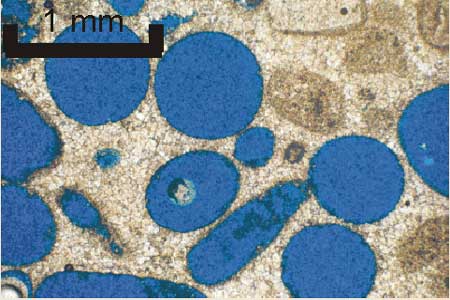
|
Coarse grained oolitic grainstone with moldic porosity. Early rim cement followed by pore filling calcite cement that occluded intergranular pores. Notable absence of cement within oomolds. No crushing evident in this view but pore connections are visible in few cases and are likely outside the plane of section. Thin section photomicrograph with plane polarized light. (Layer 2) | |
|
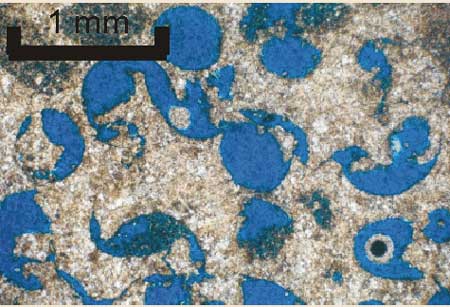
|
Coarse grained oolitic grainstone from same interval as above is very similar except extensive crushing and collapse has created well connected pore system. Fine cement shards appear to form geopedal fabric. Thin section photomicrograph with plane polarized light. (Layer 2) | |
|
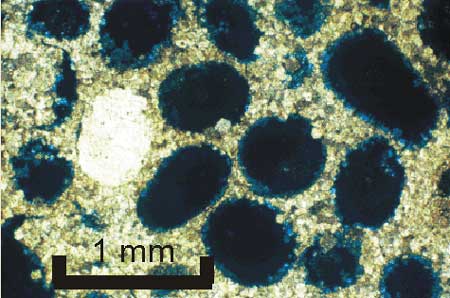
|
Medium-coarse grained oolitic grainstone with moldic porosity. Single crinoid grain. Neomorphosed early rim and pore filling calcite cement that occluded intergranular pores. Some cement growth into oomolds. Oomolds do not appear to be in contact, nor is communication through crushing evident. Thin section photomicrograph with crossed polarizers. (Layer 4) | |
|
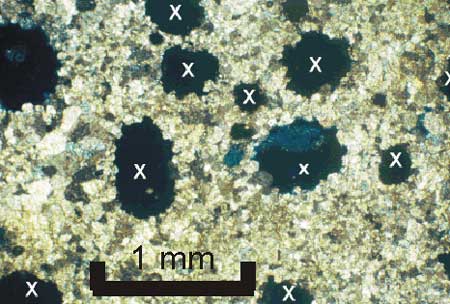
|
Medium grained oolitic grainstone with moldic porosity. Heavily neomorphosed early rim and intergranular pore filling calcite cement. Significant cement growth into oomolds reduced moldic porosity. No crushing of oomolds evident. Lack of epoxy impregnation in nearly all oomolds (X) suggests these pores are not connected. Thin section photomicrograph with Nichols crossed. (Layer 5) | |
|
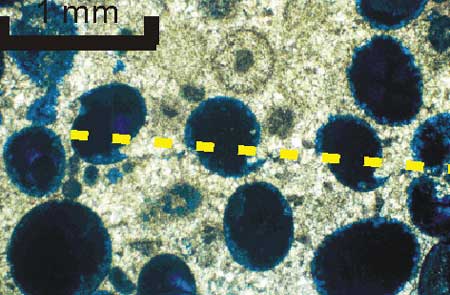
|
Coarse grained oolitic grainstone with moldic porosity. Early rim cement followed by pore filling calcite cement that occluded intergranular pores. Notable absence of cement within oomolds. Minor crushing of oomolds and slight offset is related to microfracture. Thin section photomicrograph with crossed polarizers. (Layer2) | |
|
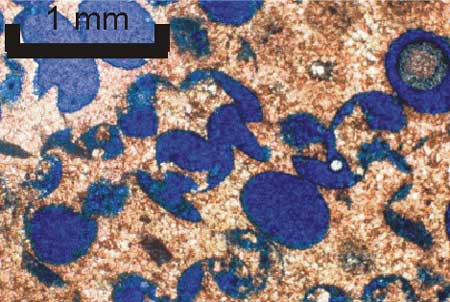
|
Coarse grained oolitic grainstone. Extensive crushing of oomolds and collapse of matrix framework resulted in added permeabiltiy. No cement evident after collapse. Thin section photomicrograph with plane polarized light. Alizarin red stain. (Layer 2) | |
|
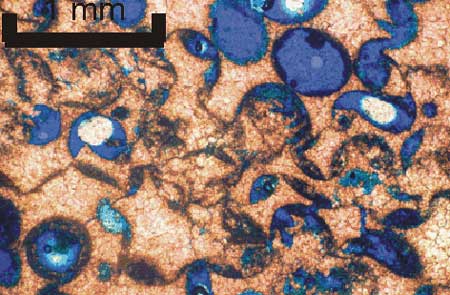
|
Coarse grained oolitic grainstone. Extensive crushing of oomolds and collapse of matrix framework resulted in slightly reduced porosity. No cement after collapse is evident. Thin section photomicrograph with plane polarized light. Alizarin red stain. | |
|
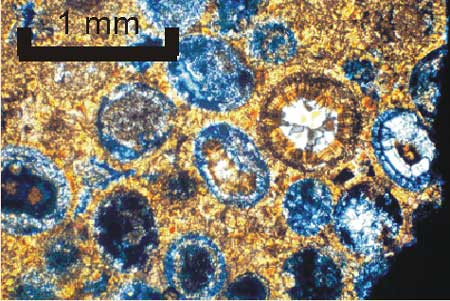
|
Medium-coarse grained oolitic grainstone with early silica replacement. Fabric prior to silicification, early rim and pore filling calcite cement, is well preserved. Thin section photomicrograph with crossed polarizers. | |
|
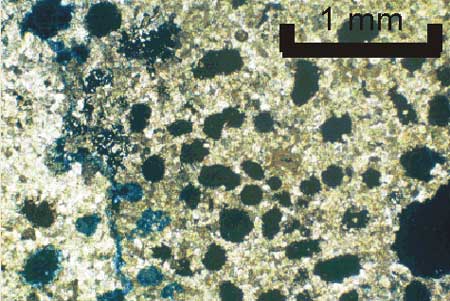 |
Fine grained oolitic grainstone with moldic porosity. Heavily neomorphosed early rim. and intergranular pore filling calcite cement. Lack of epoxy impregnation of any pores suggests that very few are connected. No crushing of oomolds evident. Thin section photomicrograph with crossed polarizers. (Layer 5) | |
|
|
|
e-mail : webadmin@kgs.ku.edu
Last updated December 2001
http://www.kgs.ku.edu/PRS/publication/OFR2001-38/P2-08.html